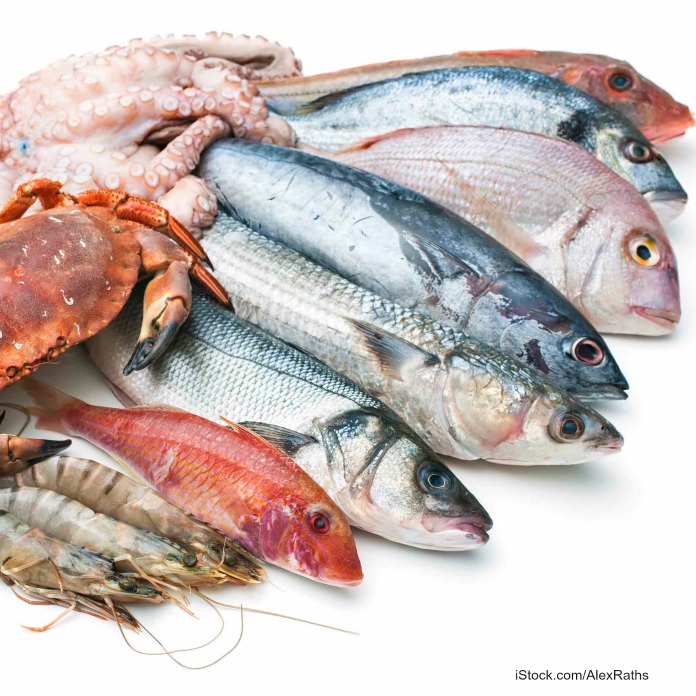Fresh seafood is a part of a healthy and balanced diet. But do you know how to buy and serve fresh seafood? These foods can cause food poisoning if not handled safely. The FDA has tips to help you.

When buying fresh seafood there are things to look for. First of all, fish should not “smell.” It should have a mild and fresh aroma and not small sour, “fishy,” or like ammonia. A whole fish’s eyes should be clear and shiny, and the flesh should be firm and spring back when pressed. Fish fillets should not be discolored or be drying around the edges. Shellfish such as shrimp, lobster, and scallops should be clear with a pearl-like color and no odor.
Packaged fresh seafood with time/temperature indicators should only be purchased if the indicator shows the product is safe to eat. And fresh fish and fillets sold as “Previously Frozen” may not have all of the above characteristics, but should smell fresh and milk.
When you buy fish and shellfish, there should be tags and labels on sacks or containers with information about the product, including the processor’s certification number. That means that the shellfish was harvested and processed in line with national shellfish safety controls.
Discard any cracked or broken shellfish. Tap the shellfish; live calms, sorters, and mussels should close. If they don’t, they are dead. Live crabs and oysters should show some leg movement. Only live crabs and lobsters should be purchased since they spoil rapidly after they die.
Don’t buy frozen seafood if the package is open, torn, or crushed on the edges. Do not buy frozen seafood packages with frost or ice crystals, which may show they have thawed. And the packages should not be bendable.
Store seafood in the fridge or freezer soon after purchase. And keep raw seafood separated from cooked seafood and other foods that are eaten raw. Wash your hands after handling fresh seafood.
Most seafood should be cooked to 145°F. Fish should be cooked until the flesh flakes or separated when teated with a fork. Shrimp, scallops, lobster, and crab flesh should become firm. And clams, mussels, and oysters should open. Throw out any shellfish that doesn’t open after cooking.
Think twice about eating raw seafood, especially if you are in a high risk group for serious complications of food poisoning, since they can contain bacteria and parasites. You can be a bit safer if you eat uncooked fish and shellfish that has been frozen, since freezing will kill parasites. But freezing will not kill some types of bacteria.
Riskier types of seafood include raw or undercooked fish and shellfish, including some types of sushi and ceviche. Raw oysters are risky, even if they have been treated after harvesting. And refrigerated types of smoked seafood, such as salmon, trout, whitefish, cod, tuna, or mackerel is usually labeled “nova-style,” “lox,” “kippered,” “smoked,” or “jerky.” Canned or shelf-stable smoked seafood is acceptable.
Now that you know how to buy and serve fresh seafood you can enjoy this healthy food.




